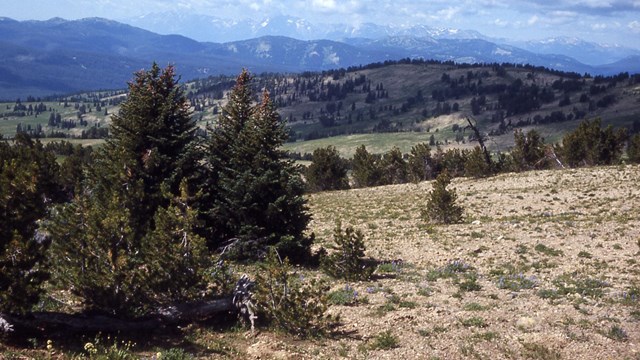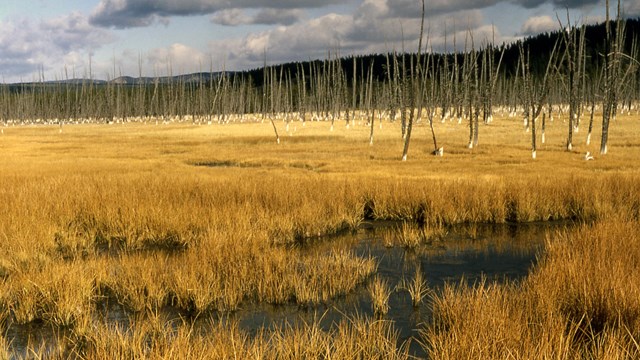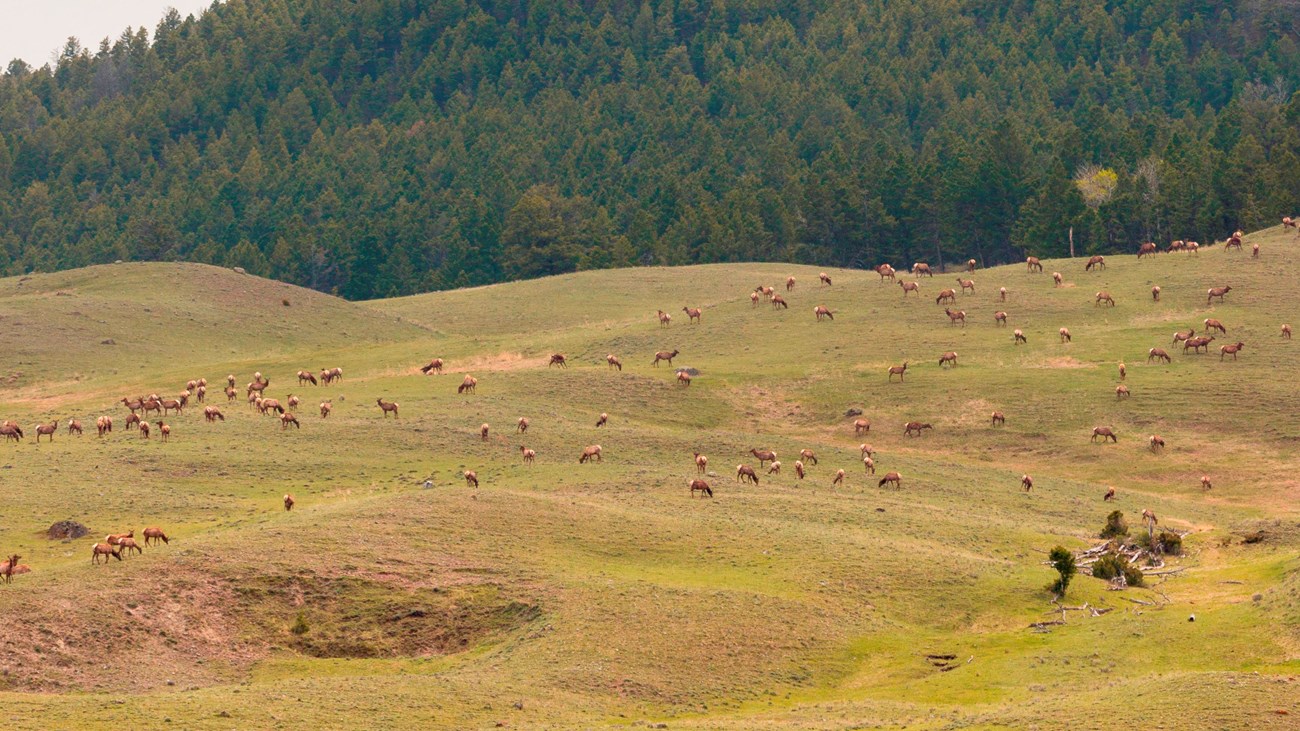
NPS Yellowstone’s wetlands include lakes, rivers, ponds, streams, seeps, spring mounds, marshes, fens, wet meadows, forested wetlands, and hydrothermal pools. They occupy over 357 square miles (924 km2) of Yellowstone: 44% are lakes and ponds larger than 20 acres or having water deeper than 6.6 feet at low water; 4% are rivers and streams; 52% are shallow water systems that dry up most years. Approximately 38% of park’s plant species—including half of the rare plants—are associated with wetlands and 11% grow only in wetlands. Each type of wetland has a different suite of plants. Wetland flora put on a nice bloom, are widely distributed, and from June to September include the park’s wildflower, fringed gentian (Gentianopsis thermalis). Wetlands in the park harbor much of the park’s sedge biodiversity with 57 of the park’s 82 sedge species known to occur in wetlands. Wetlands provide essential habitat for Yellowstone’s rare plants, thermal species, reptiles, and amphibians; and for numerous insects, birds, and fish. 
Vegetation & Resources Management Branch
Park employees who inventory, monitor, manage, and research the vast array of plant communities in the park. 
Hydrothermal Plant Communities
Fascinating and unique plant communities have developed in the expanses of thermally heated ground. 
Plants
Spring is a time for plant growth, fueling the return of many migratory species. |
Last updated: April 18, 2025
